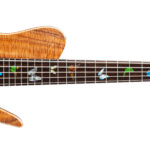When considering a budget-friendly tablet, the Amazon Kindle Fire often comes up, especially with its attractive price point of $199 compared to the then $500-$600 iPad. For guitar players thinking about integrating a tablet into their musical practice or performance, understanding the differences between devices like the Kindle Fire and iPad is crucial. While a refurbished 16GB iPad 2 was available at the Apple Store for $449 around the time of the original Kindle Fire release, the question remains: is the cheaper Kindle Fire a viable option, or is it like comparing a basic guitar to a professional-grade instrument?
The original Kindle Fire did have significant downsides. It lacked features common in tablets even then, such as a microphone, camera, 3G connectivity, and GPS. The 7-inch screen is smaller than the iPad’s, and the battery life was shorter (7 hours vs. iPad 2’s 10 hours). With only 8GB of internal memory, storage was also limited. Comparing it to the iPad 2, it’s almost like asking if a beginner guitar like an LXM is as useful for a serious musician as a high-quality Martin D-28. For basic tasks, maybe, but for serious use, the differences become apparent.
According to a review by JR Raphael, the Kindle Fire, while Android-based, wasn’t intended to be a full-fledged Android tablet experience. The user interface was heavily customized, and app selection was limited to Amazon’s app store, missing the broader range available on standard Android or Apple’s App Store. Features like customizable home screens and widgets were absent. The lack of a camera and microphone meant no video chat, and the absence of 3G/GPS restricted connectivity and location-based functionalities. Raphael concluded it was more of a “media consumption slate” with some app capabilities and a web browser, suitable for basic use but lacking the versatility of other tablets.
For guitarists, consider how a tablet might be used. Recording song ideas, accessing sheet music or chord charts, using tuner and metronome apps, watching video lessons, or even controlling backing tracks – these are all potential uses. While the Kindle Fire could handle some of these basic media consumption tasks, the limitations become apparent when needing more robust features. The iPad 2, on the other hand, as the original author noted, could even replace a laptop for many tasks, including music-related activities like recording song ideas and controlling music libraries. Its versatility makes it a more powerful tool overall.
Ultimately, the choice depends on individual needs and budget. If you are looking for a very basic, inexpensive tablet primarily for media consumption and perhaps some very light guitar-related tasks like viewing static chord charts, the older Kindle Fire might suffice. However, for a more versatile device that can grow with your needs as a guitarist, offering better performance, more features, and broader app compatibility for music creation and practice, investing in a more capable tablet like an iPad (even a refurbished older model if budget is a concern) would likely be a more beneficial long-term choice. It’s your money, and the decision is yours, but understanding the limitations of a device like the original Kindle Fire is key to making an informed decision, especially when thinking about its use for musical endeavors.

